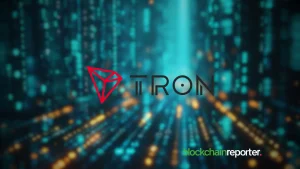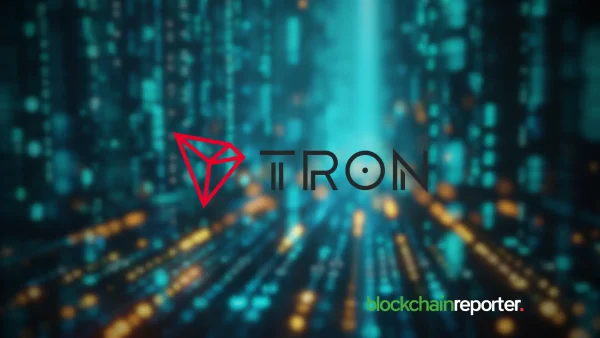
Web3 Foundation, the organization behind the Polkadot blockchain, has announced new partners for its Cogency project. The Cogency project explores how Web3 could build trust and create new revenue streams for content producers and the media.
Investigating How Decentralization Could Help Media
Decentralized technology has exploded onto the main stage of many sectors in the past decade. It is the perfect time for the media sector to understand how technology could improve the industry. The technology could be used to create long-term strategic value.
Organizations working on Cogency have embraced the ethos of collaboration, which is important in the success of decentralization. Organizations in the media sector with decades of institutional knowledge are working to understand how to develop new structures that will allow them to participate in decentralized ecosystems.
Cogency will be a meeting point for diverse publishers, content makers, and technologists, including local papers, international news, current affairs, and lifestyle brands. Decentralization, interoperability, and openness will allow third parties to integrate into the metaverse. It will enable more companies to access and come up with innovative business models. Some of the brands that have joined Cogency since October are:
Público
Publico is a Portuguese newspaper founded in 1990. It was amongst the first mainstream publications to launch an online version in 1995.
Conde Nast
It is the publisher behind world-famous publications like Wired, Vogue, Tatler, and Vanity Fair. It claims to have over a billion customers globally in different sectors, such as fashion, technology, travel, and glamour.
Reuters
Founded in 1851 in London, it is one of the biggest news agencies in the world. It has around 2500 journalists, 600 photojournalists, and around 200 offices globally. Reuters is held up as a paragon of reliability and accurate journalism.
Global Corporate Venturing
GCV acts as a bridge between global innovation and capital. It creates platforms and channels that connect investors and entrepreneurs.
Eidosmedia
A publishing software firm delivers content services platforms to new media groups globally. Its services focus on content creation and delivery.
Bright Sites
It is behind a leading content management system that offers journalists an evolving tool suit that uses data-driven AI with embedded recommendations and integrations with social media. Thus far, it has over 200 publications in digital publishing.
Le Parisien and Les Echos
These are two sister titles owned by LVMH. Le Parisien covers all types of news, while the latter covers financial sector news.
Mediahuis
It is a young multimedia group founded in 2014 in Belgium, Antwerp. The group is renowned for its reliable, independent journalism that supports innovation in the news industry.
The Evening Standard
This is a London-based free evening paper. It covers news affecting the city and national and global news. The paper only publishes on Friday and Monday.
WAN-IFRA
World Association of News Publishers, or WAN-IFRA, is a global organization that provides expertise and services to its members. It helps them innovate and prosper to perform their crucial societal role in the digital world. Its membership comprises 3000 news publishing companies and tech entrepreneurs; it also includes 60 member publisher associations that represent 18000 publications in 120 nations.
In August, Web3 Foundation announced that it was ready to lend technical expertise to the project. It is also helping fund the research phase of Cogency, led by David Tomchak, a Visiting Policy Fellow at the Oxford Internet Institute. WAN-IFRA is also involved in the research. Web3 Foundation has allocated part of the funding via a bursary scheme coordinated by WN-IFRA for its members. The bursary will help publishers free up the resources required to join the pilot.
This research aims to provide learning and a space for sharing knowledge between Web3 advocates and the media industry. The resultant blueprint will include a roadmap for the technical build and will be available for public consultation.
What the Leaders Had to Say
Ciara Byrne, the VP of New Business Innovation at Condé Nast, who is an active participant in the project, said they were excited to be part of the project “that brings together different parts of the publishing industry to ask how decentralized technologies might unlock new opportunities for media organisations and their audiences.” She added,” The Cogency project and Web3 Foundation’s practical, scalable approach, which focuses on trust and creating value, will hopefully help develop ideas that can benefit the entire publishing community.”
The Director of Communications and Partnerships at Web # Foundation, Ursula O’Kuinghttons, who has 20 years as a journalist and executive, said they were “pleased that individuals representing some renowned organisations share our belief that Web3 technologies can help redesign the media landscape. We’re excited to begin this collaboration and look forward to bring the results of this important research.”
David Tomchak, the Cogency lead, said, “We are delighted that we’ve been able to create such a stellar coalition for this project. It’s a diverse, international group that will be thrilling to work with. The brands represent an excellent cross-section of professionals who are interested in creating practical solutions using Polkadot and its associated decentralized technologies.”
Finally, Project Director Global Alliance for Media Innovation at WAN-IFRA, Stephen Fozard, said, “We are proud to have been actively involved from the start of this project and were delighted to be able to invite our interested members to join. It is crucial to understand as soon as possible the implications of Web3 for publishers in the future.”









